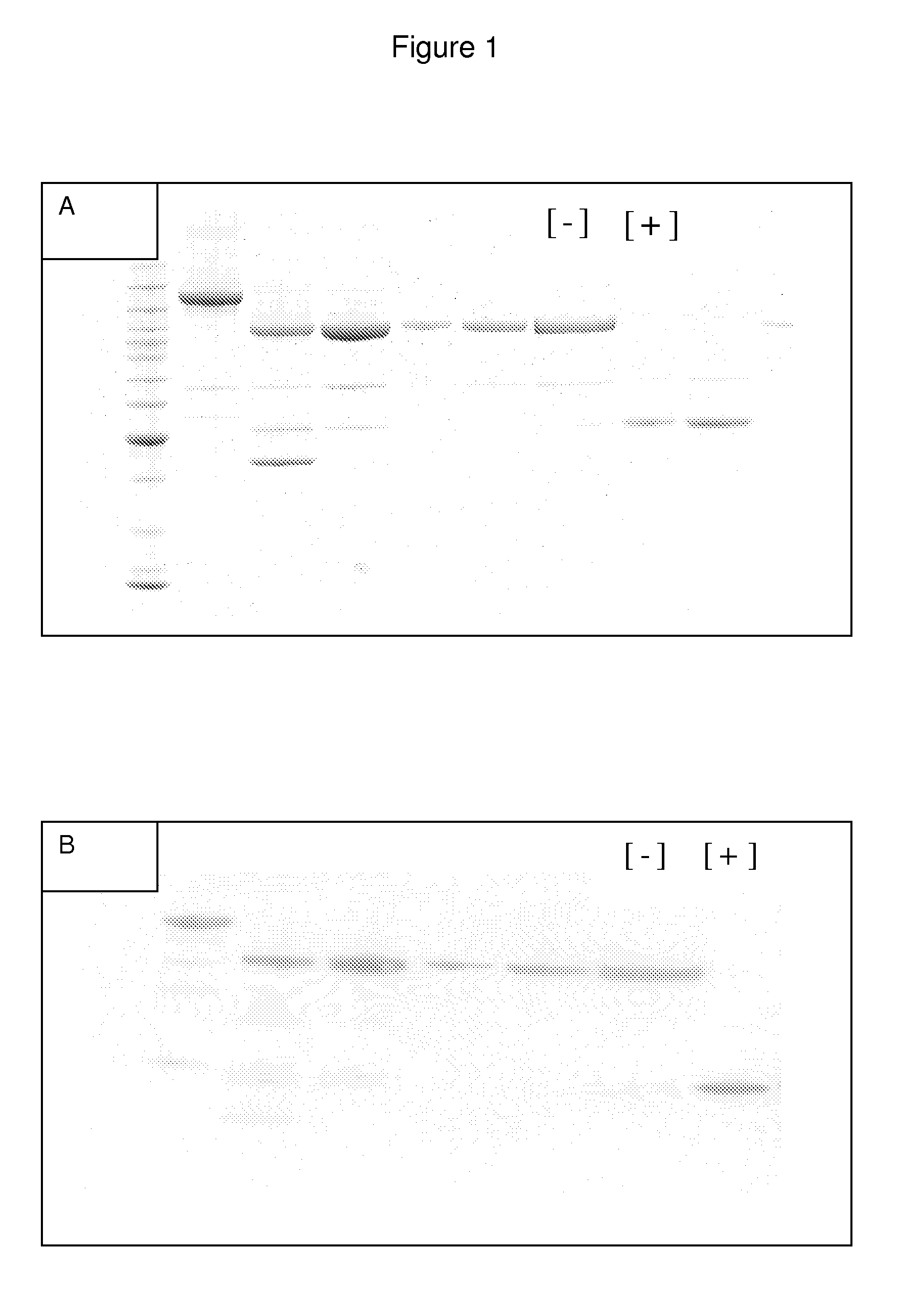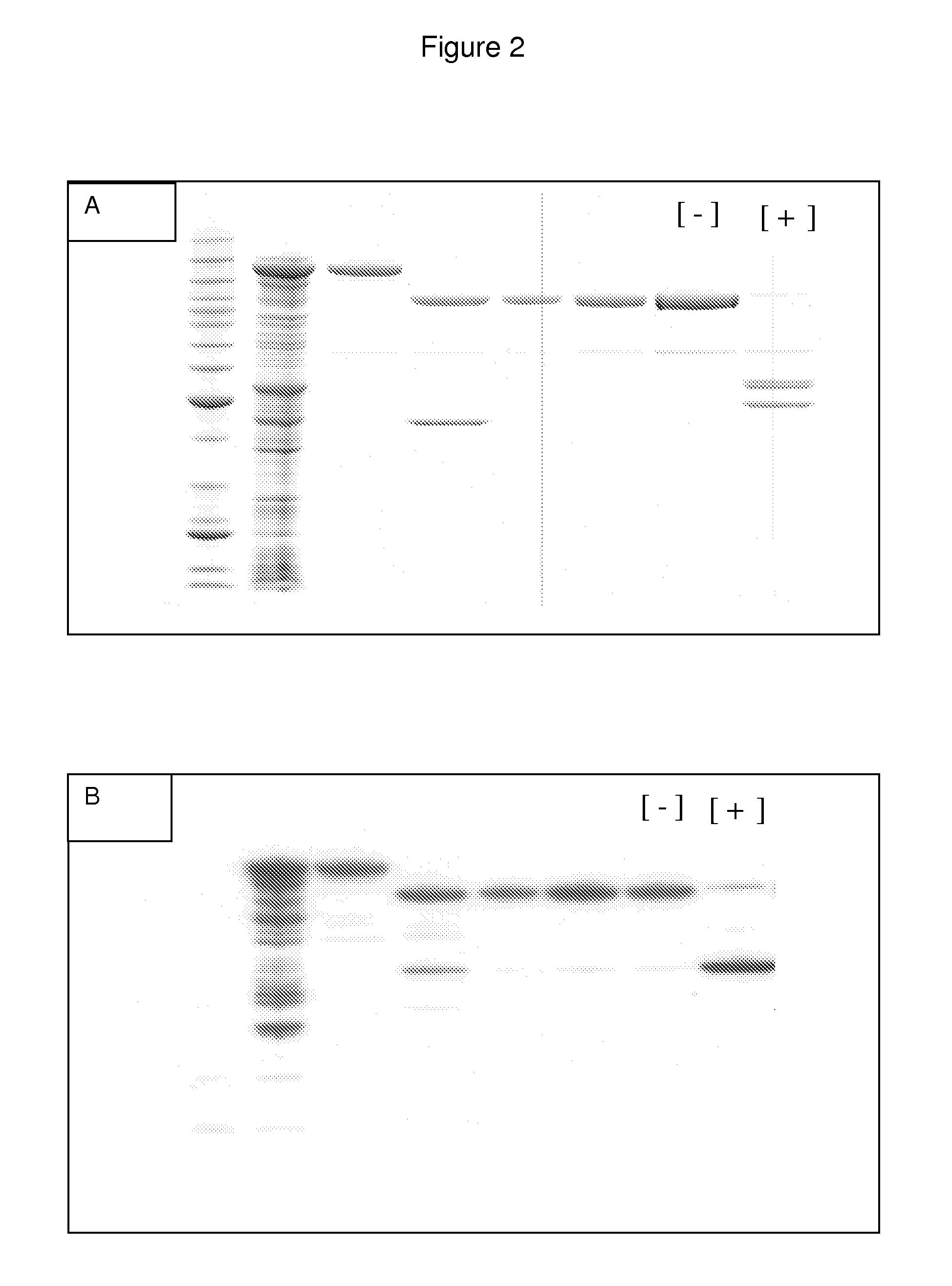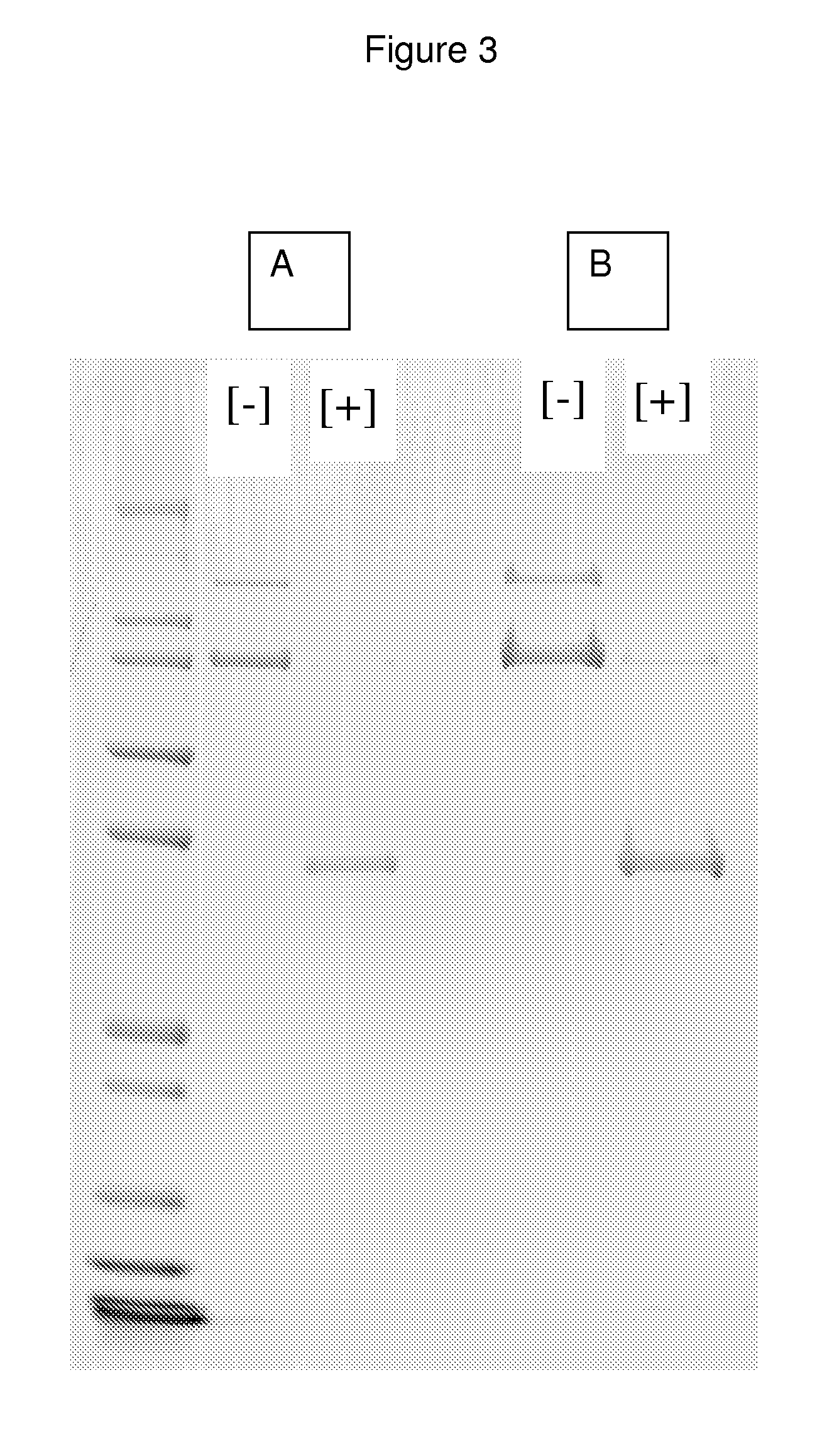Fusion proteins
a fusion protein and cytotoxic technology, applied in the field of fusion proteins, can solve the problems of mixed population of modified toxin molecules, difficult control of chemical conjugation, and inconvenient use,
- Summary
- Abstract
- Description
- Claims
- Application Information
AI Technical Summary
Benefits of technology
Problems solved by technology
Method used
Image
Examples
example 1
Preparation of a LC / A and HN / A Backbone Clones
[0303]The following procedure creates the LC and HN fragments for use as the component backbone for multidomain fusion expression. This example is based on preparation of a serotype A based clone (SEQ ID NO:1 and SEQ ID NO:2), though the procedures and methods are equally applicable to the other serotypes [illustrated by the sequence listing for serotype B (SEQ ID NO:3 and SEQ ID NO:4) and serotype C (SEQ ID NO:5 and SEQ ID NO:6)].
Preparation of Cloning and Expression Vectors
[0304]pCR 4 (Invitrogen) is the chosen standard cloning vector, selected due to the lack of restriction sequences within the vector and adjacent sequencing primer sites for easy construct confirmation. The expression vector is based on the pMAL (NEB) expression vector, which has the desired restriction sequences within the multiple cloning site in the correct orientation for construct insertion (BamHI-SalI-PstI-HindIII). A fragment of the expression vector has been r...
example 2
Preparation of a LC / A-Nociceptin-HN / A Fusion Protein (Nociceptin is N-Terminal of the HN-Chain)
Preparation of Linker-Nociceptin-Spacer Insert
[0312]The LC-HN linker can be designed from first principle, using the existing sequence information for the linker as the template. For example, the serotype A linker (in this case defined as the inter-domain polypeptide region that exists between the cysteines of the disulphide bridge between LC and HN) is 23 amino acids long and has the sequence VRGIITSKTKSLDKGYNKALNDL (SEQ ID NO:104). Within this sequence, it is understood that proteolytic activation in nature leads to an HN domain that has an N-terminus of the sequence ALNDL. This sequence information is freely available from available database sources such as GenBank (accession number P10845) or Swissprot (accession locus BXA1_CLOBO). Into this linker a Factor Xa site, nociceptin and spacer are incorporated; and using one of a variety of reverse translation software tools [for example Edi...
example 3
Preparation of a Nociceptin-LC / A-HN / A Fusion Protein (Nociceptin is N-Terminal of the LC-Chain)
[0314]The LC / A-HN / A backbone is constructed as described in Example 2 using the synthesised A serotype linker with the addition of a Factor Xa site for activation, arranged as BamHI-SalI-linker-protease site-linker-PstI-XbaI-stop codon-HindIII (SEQ ID NO:8). The LC / A-HN / A backbone and the synthesised N-terminal presentation nociceptin insert (SEQ ID NO:9) are cleaved with BamHI+HindIII restriction enzymes, gel purified and ligated together to create a nociceptin-spacer-LC-linker-HN. The ORF (SEQ ID NO:15) is then cut out using restriction enzymes AvaI+XbaI for transfer into expression vectors for expression to result in a fusion protein of the sequence illustrated in SEQ ID NO:16.
PUM
| Property | Measurement | Unit |
|---|---|---|
| molecular mass | aaaaa | aaaaa |
| molecular mass | aaaaa | aaaaa |
| molecular mass | aaaaa | aaaaa |
Abstract
Description
Claims
Application Information
 Login to View More
Login to View More - R&D
- Intellectual Property
- Life Sciences
- Materials
- Tech Scout
- Unparalleled Data Quality
- Higher Quality Content
- 60% Fewer Hallucinations
Browse by: Latest US Patents, China's latest patents, Technical Efficacy Thesaurus, Application Domain, Technology Topic, Popular Technical Reports.
© 2025 PatSnap. All rights reserved.Legal|Privacy policy|Modern Slavery Act Transparency Statement|Sitemap|About US| Contact US: help@patsnap.com



